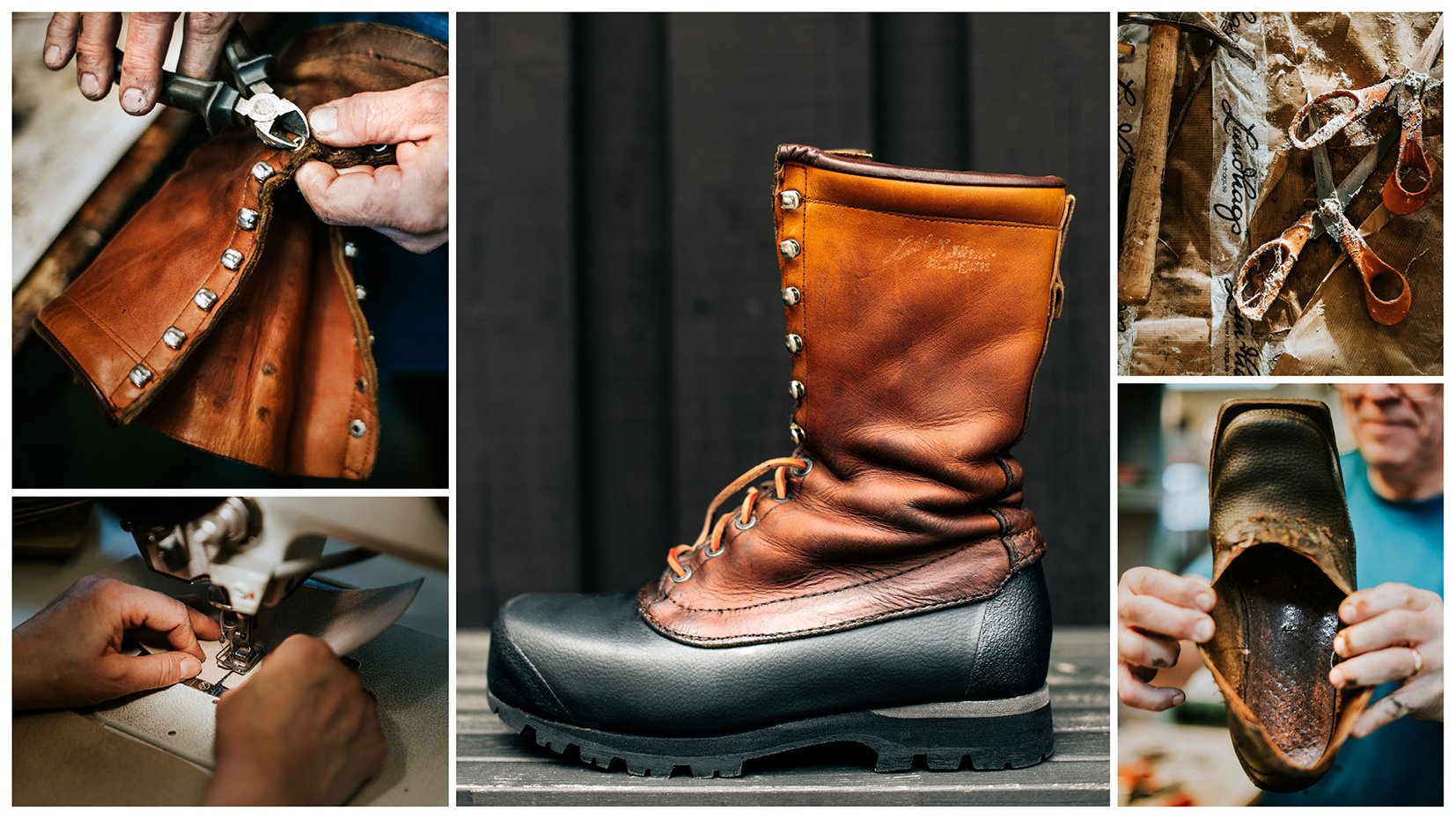A Win-Win-Win Situation
We don’t produce as fast and as cheap as possible - we do it as good as possible - for you and nature! It is natural for people to compare prices, and numerous times we have been asked “why are Lundhags’ products so expensive?” A pair of Lundhags boots costs between 1,500 SEK and 5,000 SEK, which is a lot of money. But is it expensive? Let's take a closer look.
The question of price is not easy, it can’t be answered with a smart one-liner. The shortest answer would be that Lundhags’ clothes and shoes last a long time – they are durable. That’s it. Since Lundhags’ vision is that your boots will last a lifetime! In today's consumer society, that sounds almost impossible. But we can, thanks to our method of production, deliver clothes and boots of high quality which, if taken care of according to the instructions, will last for many, many years. For comparison, we can take a pair of sneakers. A pair of sneakers lasts for about a year. Or if they are used a lot, for hiking for instance (which some people actually use them for), they do not even last that long.
Here is the core of price reasoning – if you count how many times, how much and for how long you can use your shoes, you will realize that the boots are cheaper than the gym shoes. The Swedish Consumer Agency calls this "cost per use", which means that the value of a product is related to how much you can use it. The more you can use an item, the more you often pay at the time of the purchase. Your best buy is therefore the one you can use the most in relation to its purchase price.
Its is all about function
Behind each part there is an idea that has been carefully analyzed, tested and developed, which requires both special competence and time. Everyone at Lundhags are experienced hikers and outdoor enthusiasts, and are nerds when it comes to finding out what actually works in the mountains or in the woods. The founder Jonas Lundhag was so interested in the function of the shoes that he studied the anatomy of the feet and eventually became an orthopedist. He became an orthopedist to become a better shoemaker! That passion, burning interest and knowledge is unique to Lundhags, and something we really cherish.
The sustainability debate today is largely about recycled materials, water consumption, and CO2 emissions. There is very little focus on the fact that we must stop with the wear and tear and the over-consumption, and the rapid trend changes of the fashion chains encourage this unnecessary and high consumption. Lundhags is going the other way. We see high quality and durability as a part of good function – just like repairability. All Lundhags’ clothes and shoes are designed to be repaired when needed.

Price and quality
The answer regarding price and quality is clear in the paragraph above. It is downright ironic that many clothing companies use messages such as "made to last" or "care and rewear" even though their original business ideas are the exact opposite. What do they really mean? At Lundhags we mean what we say, and deliver clothes that last a long time, and that you also want to use for a long time, i.e. with a more classic and timeless design. A general tip for consumers is to think style instead of trend.
According to a Swedish consumer survey from 2018, the average Swede buys 15 kg of clothes per year, and throws away 8 kg. In another survey from the same year with 1000 female and 1000 male informants, 36% of the participants stated that they buy clothes and shoes that they don’t really need every six months or even more often.
We are inundated with cheap mass-produced clothes even though today everyone knows that manufacturing is wasting the earth's resources. The Swedish Environmental Protection Agency writes on their website that textile production is one of the most environmentally damaging industries in the world. To produce 1 kg of cotton takes 2,700 liters of water, 1 kg of chemicals, 16 kg of carbon dioxide emissions and then you get 0,5 kg of waste. Such massive resources for just 1 kg of fabric. And besides, the people who make the clothes for us often live in difficult conditions. The way that clothes are largely produced and consumed today is not sustainable at all.
We mean that the sustainability debate should examine, raise and talk more about the wear and tear consumption. Maybe it shouldn't be allowed to make cheap clothes in poor quality, since this continues the negative spiral of rapid trends and ever-increasing consumption. Clothes and shoes should have a longer lifespan! That is what both the consumer, the producer and the environment deserves.
Our Sustainability expert
Lundhags’ sustainability expert, Sara Wiksten, believes that the Outdoor industry as a whole has come a long way – everyone has realized how important it is to be carbon neutral, that sloppy consumption leads to clear negative effects. She explains that the most difficult thing about sustainability work is the cost.

-Sustainable things cost more to manufacture, “friendly" materials are often more expensive. And we still try to keep the prices down to be commercial and interesting. Lundhags has a developed strategy with a clear focus on carry over, i.e. our products must survive more than one season, says Sara Wiksten.
We humans are quite simple animals despite all our progress, and it is not so easy to change our ways. We have become accustomed to a kind of satisfaction in shopping with low prices. If we instead succeed in practicing "slow fashion" – i.e. shop less often but in better quality, we will contribute to a positive future. And despite the higher purchase price, in the long run, we even save money. And we also take care of the environment. A win-win-win situation!
Conclusion – is Lundhags expensive? No. With such a long lifespan, our products actually get an extremely low "cost per use". If you then add often completely unique functions and continue on with environmental thinking and repairability, then perhaps you can rather ask yourself whether Lundhags’ shoes and clothes are not directly cheap.

